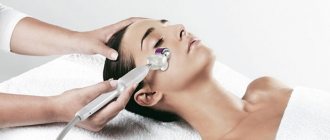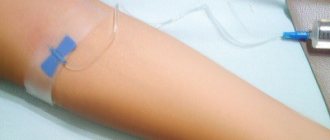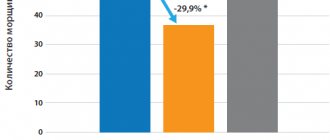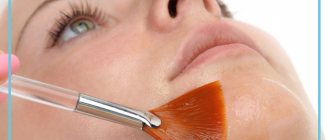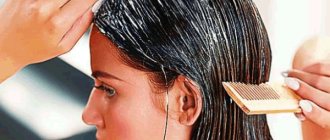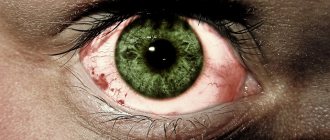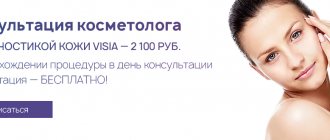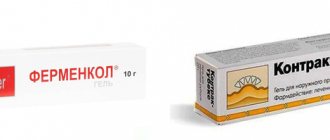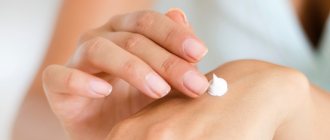Ultraphonophoresis in cosmetology is the effect on the skin using ultrasonic waves and cosmetic or medicinal preparations. The action of the method is based on the ability of ultrasound to loosen the structure of connective tissue, increase the permeability of cell membranes, improve microcirculation, and stimulate the synthesis of hyaluronic acid, collagen and elastin. When the effect of various drugs to improve the structure of the epidermis, rejuvenation, and hydration is added to this, an even more pronounced effect can be obtained.
Traditionally, ultraphonophoresis was used exclusively for medicinal purposes - for example, to relieve pain and inflammation in joints, muscles, to prevent salt deposition, etc. Today, the capabilities of ultrasound are actively used by hardware cosmetology. The non-injection technique has virtually no restrictions, is safe, painless and is becoming increasingly popular.
What result should I expect?
Depending on what composition the cosmetologist will use, the procedure will have a moisturizing or, conversely, drying, anti-inflammatory effect. The most popular option is ultraphonophoresis with low molecular weight hyaluronic acid. Ultrasound allows you to deliver the drug deep into the tissue through the ducts of the sebaceous glands, intercellular spaces, providing long-term hydration and, as a result, a more youthful and fresh appearance.
Phonophoresis with hyaluronic acid is comparable in effectiveness to injection techniques, but it must be taken into account that to achieve the result, a course of 8-10 procedures will be required (the compositions gradually accumulate in the tissues, providing a rejuvenating effect). Under the influence of ultrasound, the molecules of the administered drugs become more mobile, and the acceleration of blood flow enhances this effect.
The benefits of phonophoresis
If scars, scars, acne appear on parts of the body, age-related tissue changes, swelling, or the skin becomes dry, then phonophoresis will come in handy. This procedure is also useful for people with metabolic disorders, rheumatic pain, gynecological, urological diseases and gastrointestinal complications.
In cosmetology, phonophoresis is used to moisturize the face, cleanse the skin, and rejuvenate. The components introduced with its help smooth out wrinkles, restore skin after fatigue, enrich tissues with oxygen and provide better nutrition to cells.
The thing is that ultrasound has a number of therapeutic properties. It dilates blood vessels, has anti-inflammatory, reparative, absorbable, trophic and analgesic effects. Along with scoring, biostimulants, hormones, antibiotics and other drugs are used. This series of benefits of ultrasound has a beneficial effect on the human body. That is why phonophoresis is increasingly used in cosmetology today.
How is the procedure done?
A specialist can prepare a cosmetic cocktail intended for administration immediately before administration. Also on the modern market there are dozens of ready-made formulations for various purposes. In addition, to carry out ultraphonophoresis of the face, you will need a contact substance - as a rule, these are products based on various oils, glycerin or lanolin.
The work takes place in several stages:
- Makeup removal, facial cleansing.
- Applying an antiseptic solution.
- Application of cosmetic composition.
- Impact on the skin with a special attachment of a device that generates ultrasonic waves.
At the end of the ultraphonophoresis session, a protective cream is applied - it allows you to consolidate the result. For patients with sensitive skin, it is especially important that during the intervention they will not feel any discomfort - the effect is absolutely painless, the tissues are not injured, which means there is no need to mask the consequences in the form of bruises and swelling.
Carrying out ultraphonophoresis:
- Disinfection and cleansing of facial skin from makeup and various contaminants.
- Application of a cosmetic composition and conductive gel to the skin, ensuring tight contact of the device’s handpiece with the surface being treated.
- Using a manipulator located perpendicular to the surface being treated, ultrasonic waves penetrate into the deep layers of the skin. The duration of exposure to one zone in sliding mode is no more than 15 minutes. Processing is performed using linear and circular movements. The specialist controls the intensity of the ultrasound.
- Upon completion of the procedure, the remaining preparations are removed with a damp cloth, and a finishing cream is applied to the treated areas of the skin.
- If necessary, in addition to the ultraphonophoresis procedure, various serums and masks are used.
Ultraphonophoresis in cosmetology is recommended to be carried out in a course of at least 8-12 procedures, once every 2-3 days.
In addition, the ultraphonophoresis procedure is recommended to be done before any important event as an “exit procedure”.
What formulations can be used?
In addition to hyaluronic acid, gels based on vitamin E, bee jelly, as well as extracts of various medicinal plants, collagen, chitosan, and placenta extract are used for ultraphonophoresis.
If the patient’s main problem is scars, formulations with trypsin and lidase are used. To combat acne and excess oil, gels with aloe vera, chamomile, zinc, and sulfur are used - they have an antiseptic, anti-inflammatory, and drying effect.
If necessary, the composition of the administered drugs can be changed during the course - this way you can cope with a whole range of problems.
You can find out the cost and sign up for ultraphonophoresis at our clinic in Moscow by phone. Our center employs experienced cosmetologists who are proficient in the most advanced hardware techniques. We will help you cope with any aesthetic problem, restore the elasticity, smoothness and youth of your skin.
Impact zones
Soft tissues have excellent permeability to high-frequency sound waves, so ultraphonophoresis affects all parts of the skin and underlying structures. In cosmetology, the procedure is primarily used to restore the appearance of the skin. The condition of this organ depends on external and internal factors, including climate, diseases, hormone levels and the effectiveness of hygiene procedures. Ultrasound therapy allows a woman to get rid of acquired ailments.
Ultrasound penetration areas:
- Epidermis is the superficial part of the skin. The stratum corneum, consisting of dead cells, is necessary for the body to protect against external factors. Below are areas of the epithelium responsible for renewing the cellular composition of the skin.
- The dermis is the middle section of the skin. Hair follicles, nerves, blood vessels, smooth muscles, sweat and sebaceous glands are located here. It is worth noting that the ducts of the sebaceous and sweat glands end on the surface of the skin, so the appearance of the integumentary tissue depends on the work of these organs. Excessive activity of the glands makes the skin oily.
- Subcutaneous tissue is the deep layers of the skin consisting of adipose tissue. With the help of fat reserves, the body stores energy and fluid.
- Muscles and blood vessels. These are skeletal and facial muscles necessary for motor activity. Along with the blood, a sufficient amount of oxygen and glucose must enter the muscles.
Thus, the action of ultrasound makes it possible to change the condition of all parts of the soft tissues.
Phonophoresis at GUTA CLINIC
Phonophoresis in Moscow
today they are carried out not only by various medical institutions, but also by beauty salons, where the procedure is often carried out in violation of sanitary standards by uncertified specialists who do not have sufficient qualifications to carry out the procedure.
We do not urge you to give up going to beauty salons completely, we simply remind you that phonophoresis
is primarily a medical procedure, which is best done by an experienced physiotherapist. Otherwise, not only is a sufficient therapeutic effect not guaranteed, but negative consequences of such exposure, for example, an allergic reaction to the drug used, cannot be excluded.
Only a competent specialist, having familiarized himself with the results of your examination and having sufficiently complete information about your health, will help you select and conduct for you the necessary course of phonophoresis
in accordance with all requirements imposed by the Ministry of Health of the Russian Federation.
GUTA CLINIC employs highly qualified specialists with extensive experience in the successful use of phonophoresis
in the treatment of a wide range of different diseases.
Sign up for phonophoresis now, and tomorrow your family and friends will note how you have changed and become prettier!
Pros and cons of phonophoresis
Among the undoubted advantages of the ultrasound procedure are:
- duration of the healing effect - under the power of ultrasound, medications penetrate deep into the skin, thereby ensuring a cumulative effect and high effectiveness of the procedure;
- no need for special training and rehabilitation period - ultrasound exposure is a safe procedure;
- painlessness and low risk of side effects after sessions;
- targeted action of the drug - effectiveness is higher than taking tablets or ointments;
- speed and accessibility - the procedure is inexpensive.
Among the disadvantages of phonophoresis is the appearance of areas of redness immediately after the procedure. This is especially noticeable on sensitive skin. Some patients may experience minor discomfort from the ultrasound or may complain of sound.
In order for phonophoresis to bring positive results, the procedure must be carried out regularly. The frequency of sessions depends on the individual characteristics of the body and is determined by the attending physician.
Carrying out the procedure at home
The latest developments in modern medicine and cosmetology make it possible to carry out phonophoresis at home. For this purpose, mobile ultrasonic devices are used. Their compact size allows the procedure to be carried out in any room, even in small apartments.
Carrying out ultraphonophoresis at home allows you to save time and money on the procedure. Rejuvenating sessions can be carried out at a time convenient for you, in your usual home environment.
But one should take into account the fact that working with an ultrasound machine requires certain skills and compliance with the rules for this procedure. If the patient has doubts, it is better to entrust healing sessions to professionals.
Principle of operation
The mechanism of action of ultraphonophoresis on tissue is due to biological effects that occur during the propagation of vibrations in tissues. Physicochemical, thermal and mechanical changes are observed in the body. The connective tissue of the skin and subcutaneous structures is subject to the greatest therapeutic effect, since it contains a large number of blood vessels. The additional effect of the procedure is due to the properties of the medicinal substances used. Increased transport in tissues is associated with polarization of cell membranes and improvement of vascular microcirculation.
Additional effects:
- Restoration of the natural structure of adipose tissue. High-frequency sound waves allow you to loosen the subcutaneous tissue. This effect is useful for cellulite and obesity.
- Improved metabolism achieved by converting heat into energy. There is an expansion of blood and lymphatic vessels. Synthetic processes in tissues are enhanced, resulting in the formation of more elastin and collagen in skin cells. The skin becomes smooth and elastic.
- Cleaning fabrics. The mechanical action of ultrasound is used to remove skin impurities. The vibrations free the excretory ducts of the glands from blockages and help remove toxins from the body.
- Enhanced cell nutrition. Energy substrates and oxygen enter cells through dilated vessels. This effect is especially important during intense physical activity, when muscle tone is impaired due to lack of oxygen.
- Relief of inflammatory processes. Inflammatory mediators are removed from tissues faster.
- Strengthening local immunity. More protective cells and humoral factors of the immune system enter the soft tissues.
For all therapeutic effects to appear, phonophoresis must be used repeatedly. The duration of the course depends on the patient’s complaints and the medications used.
